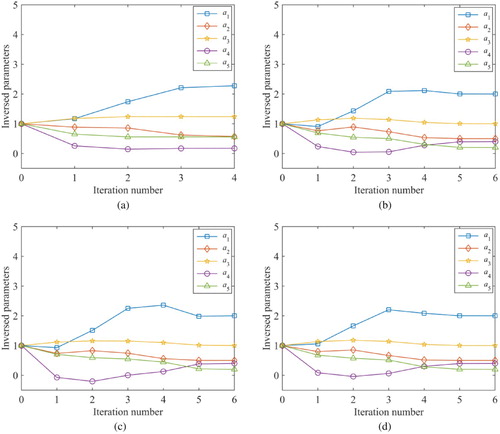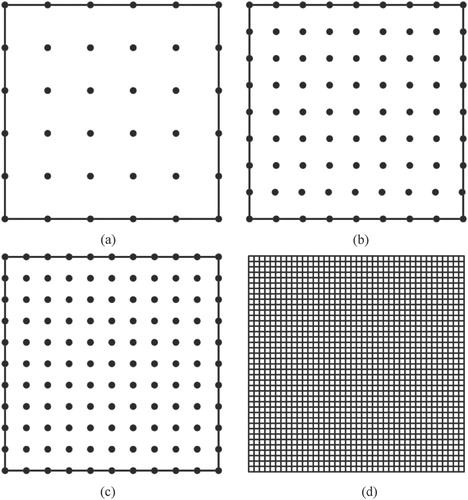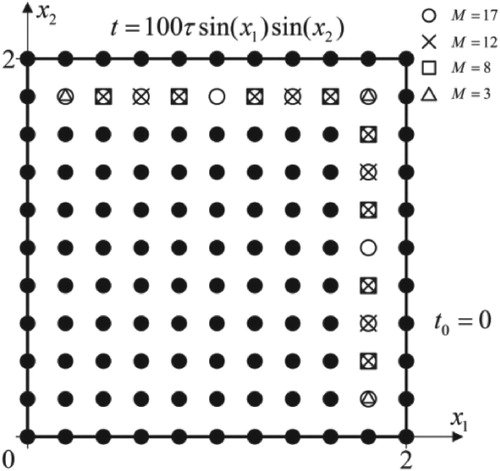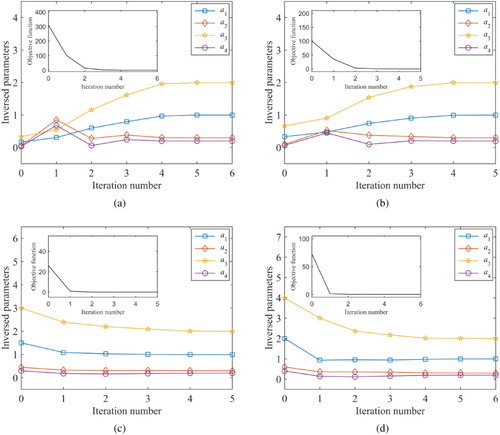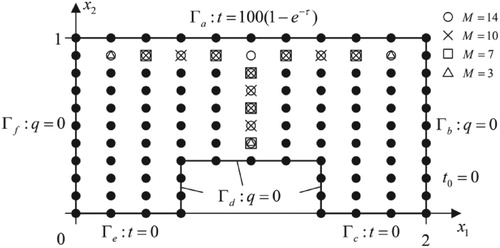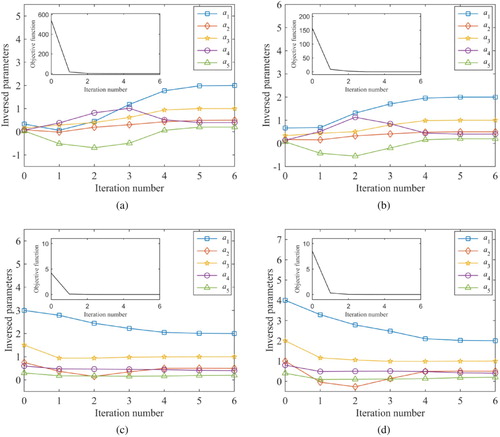Figures & data
Table 1. The fundamental operations of the DTM.
Table 2. The detailed boundary element models.
Figure 2. The temperature distribution for different computational models. (a) BEM 1, (b) BEM 2, (c) BEM 3, (d) FEM.
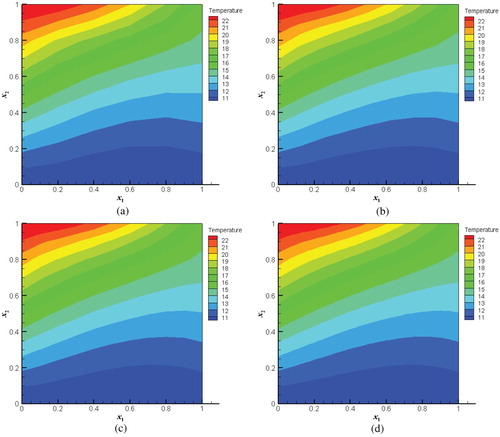
Table 3. The comparison of DT-DRBEM and FD-DRBEM.
Table 4. The comparison of the L-M and the CGM.
Table 5. The inverse results for different initial guesses.
Figure 5. The results for different number of measurement points. (a) 3 measurement points, (b) 8 measurement points, (c) 12 measurement points, (d) 17 measurement points.
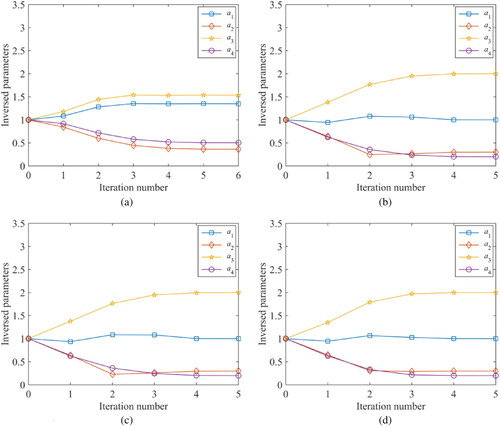
Table 6. The inverse results for different measurement points.
Table 7. The inverse results for different measurement errors.
Table 8. The inverse results for different initial guesses.
Figure 8. The results for different number of measurement points. (a) 3 measurement points, (b) 7 measurement points, (c) 10 measurement points, (d) 14 measurement points.
